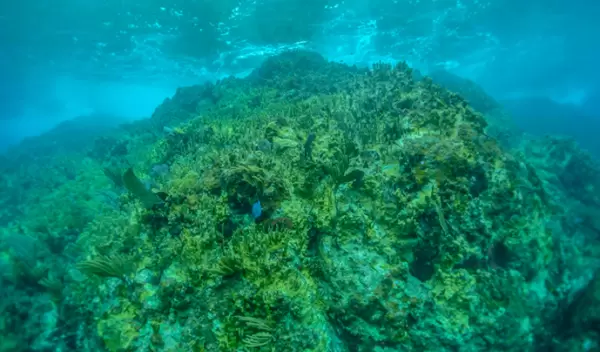
Fire corals winning the battle for domination of Caribbean reefs
Every year for the past three decades, California State University, Northridge marine biologist Peter Edmunds has traveled to the Caribbean island of St. John in the U.S. Virgin Islands to document the life history of fire corals.
"This is more than just a story about fire coral because in that environment, space is a limited resource," Edmunds said. "If you've got it, you're doing well. If you don't have it, you want it and must fight for it.
"Imagine that a wall is the marine environment and stuff is duking it out to gain that space. The species that holds the space becomes the winner. One of the ways organisms do that is through the strategy of shape. What shape do they have? How do they use that shape to exploit space?"
In the battle over the limited space on the shallow reefs of St. John, Edmunds has found that fire corals — with their ability to grow as sheets or as trees — are the winners.
"They have a strategy that allows them to spread when they can and allows them to produce branches when they can,” he said. "Fire corals have been around for millions of years and what they are doing is successful. I would posit that having gone this far, they are now poised to be somewhat the inheritors of the reef, while other corals, particularly stony corals, die back."
The U.S. National Science Foundation-supported findings are published in the journal Proceedings of the Royal Society B.
Fire corals enjoy the best of both worlds. "When it's not stormy, they can produce branches and exploit the light and plankton in the water," Edmunds said. "When it's storming and everybody gets beaten up, they lose their branches but still have their sheets, which they can use to spread out and claim more territory."
Edmunds is quick to point out that the study does not mean that coral reefs are in great shape, noting that these marine ecosystems cannot survive with just one coral species.
"This study exemplifies the power of long-term research," said Betsy von Holle, a program director in NSF's Division of Environmental Biology, which co-funded the research with NSF's Division of Ocean Sciences. "By taking careful observations over decades, scientists can see patterns emerge and the species that are 'winners' under the governing climate conditions."


